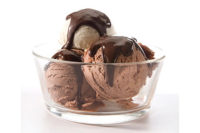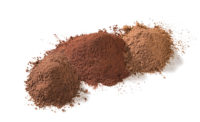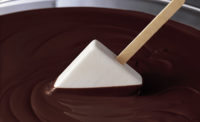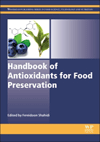Chocolate and cocoa pair well with dairy products
Chocolate and cocoa are long-time associates of dairy. These days, everything from frozen yogurt to blended coffee beverages is angling for a chocolaty profile. A panel of experts explains how to formulate with the ingredients.






Cocoa, chocolate and how to tell the difference
Dairy Foods: What is cocoa, what is chocolate and how do they differ?
Gabriella Mahnke: Cocoa and chocolate come from the Theobroma cacao plant. The pods from the tree are removed and shelled, and inside are cocoa nibs. The nibs are ground to a cocoa mass, which is pure chocolate, and most commonly melted into what is termed chocolate liquor.
Cocoa powder is produced by pressing out the fat — called cocoa butter — to produce a cake that is then ground to cocoa solids. Fat is left in the cake: high-fat cocoa ranges from 22% to 24% BF, while most cocoa used is 10% to 12% BF, and there is also the more uncommon “defatted” cocoa.
Neil Widlak: Dark chocolate contains chocolate liquor, sugar and additional cocoa butter, while milk chocolate contains chocolate liquor, sugar, milk powder and cocoa butter.
Stacy Reed: Bittersweet or semisweet chocolate contains a minimum of 35% chocolate liquor. Traditionally, the term “bittersweet” is reserved for chocolates with higher cocoa-solid content. Sweet chocolate contains 15% to 35% chocolate liquor, while milk chocolate must contain a minimum of 10% chocolate liquor. Milk chocolate must also contain 12% milk solids. Lastly, white chocolate must contain a minimum of 20% cocoa butter and 14% milk solids.
Editor’s note:Standards of identity for cacao products appear in Title 21 Section 163 of the Code of Federal Regulations (CFR).
Looking for a reprint of this article?
From high-res PDFs to custom plaques, order your copy today!









